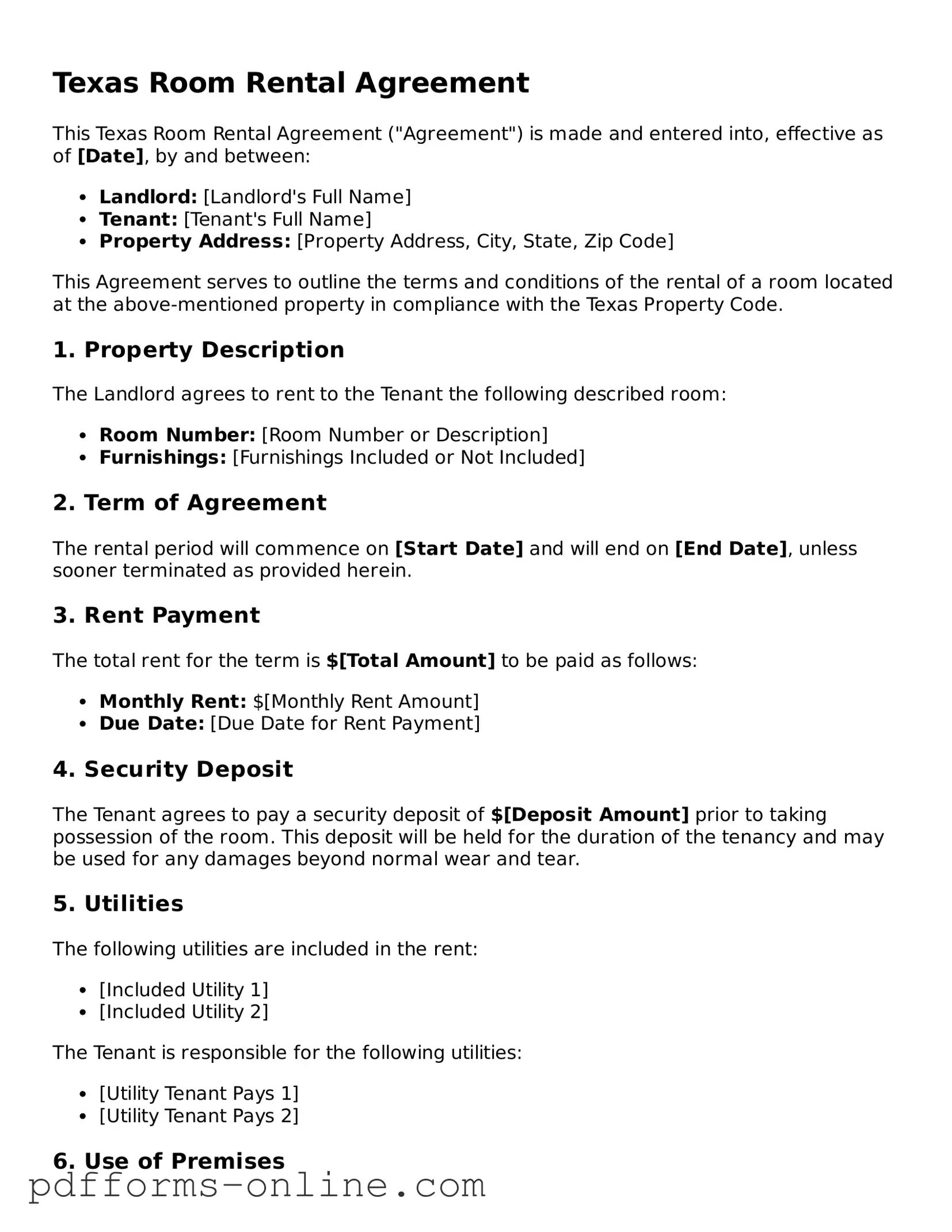Texas Room Rental Agreement
This Texas Room Rental Agreement ("Agreement") is made and entered into, effective as of [Date], by and between:
- Landlord: [Landlord's Full Name]
- Tenant: [Tenant's Full Name]
- Property Address: [Property Address, City, State, Zip Code]
This Agreement serves to outline the terms and conditions of the rental of a room located at the above-mentioned property in compliance with the Texas Property Code.
1. Property Description
The Landlord agrees to rent to the Tenant the following described room:
- Room Number: [Room Number or Description]
- Furnishings: [Furnishings Included or Not Included]
2. Term of Agreement
The rental period will commence on [Start Date] and will end on [End Date], unless sooner terminated as provided herein.
3. Rent Payment
The total rent for the term is $[Total Amount] to be paid as follows:
- Monthly Rent: $[Monthly Rent Amount]
- Due Date: [Due Date for Rent Payment]
4. Security Deposit
The Tenant agrees to pay a security deposit of $[Deposit Amount] prior to taking possession of the room. This deposit will be held for the duration of the tenancy and may be used for any damages beyond normal wear and tear.
5. Utilities
The following utilities are included in the rent:
- [Included Utility 1]
- [Included Utility 2]
The Tenant is responsible for the following utilities:
- [Utility Tenant Pays 1]
- [Utility Tenant Pays 2]
6. Use of Premises
The Tenant will use the premises solely for residential purposes. Any illegal activities, subleasing, or unauthorized guests must be avoided.
7. Termination
Either party may terminate this Agreement by providing written notice at least [Notice Period] prior to the intended termination date.
8. Governing Law
This Agreement shall be governed by the laws of the State of Texas.
9. Signatures
By signing below, both parties agree to the terms and conditions outlined in this Rental Agreement.
Landlord Signature: ________________________ Date: _______________
Tenant Signature: _________________________ Date: _______________
